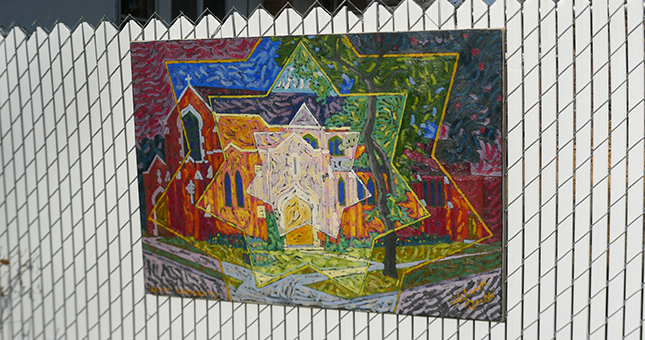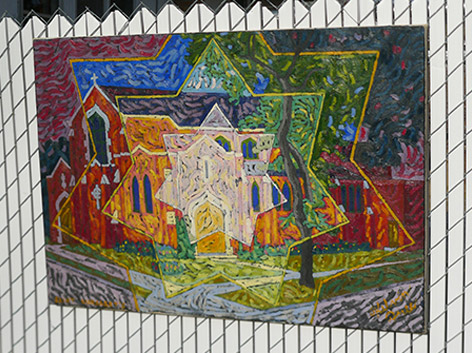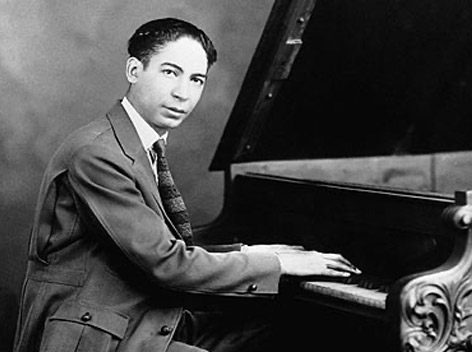
Past the Walls and into the World: Visual Arts During the Pandemic
How do we reframe the use of our God-given gifts when all our familiar ways of giving are taken away? This is the question all artists have been struggling with in the current pandemic. New and amazing avenues are presenting themselves.
I awoke with an urgent prompting of an idea that seemed to come out of nowhere but, in fact, was sourced from a question that had been brewing since the start of the pandemic.
That question was, “What am I to do?” All that was regular in my day-to-day life was suddenly interrupted and cancelled. A void stretched out before me.
The answer to that question burst forth unexpectedly that morning. I must take the art in the studio and hang it outside on the fence. Creativity, colour, and beauty are meant to be shared. And now it must be done in a truly public way: outside!
My sense of calling as an artist during this pandemic was to show art in a new way. I sorted through my own collection of work and found twenty-five pieces that I could install on the fence. Most of my work is of nature and landscape.
And thus The Fence Gallery was christened; so began a new adventure to nurture, brighten, broaden, and deepen the culture of my small world. An adventure in what renowned artist and author, Makoto Fujimura would call “culture care.”
In his book Culture Care: Reconnecting with Beauty For Our Common Life, Fujimura says culture is like “a garden to be cultivated.” In order to care for this garden we are to become “generative and feed our culture’s soul with beauty, creativity and generosity.”
People were feeling downcast and anxious. They took to walking around the neighbourhood more. The weather was dull and grey. But coming upon a fence filled with colour and new images gave neighbors quite a surprise. Word began to spread. In fact, on the very first day the art was hung, CBC Television came by to do a story, that aired on the 6 o’clock evening news.
Later that day I received a call from a community newspaper that also wanted to do a story on The Fence Gallery. News travelled fast.
Folks were taking photos and posting them on Facebook. Many individuals told me how much this lifted their spirits. Some made a point to come by daily. Children were especially delighted, and I could hear them squeal as they came up on the paintings.
When we enter into a new way of doing and being, we have no notion of how effective our efforts will be or of what kind of response will result. So, we take a risk. One of the risks, I soon realized, was that the art I shared could be stolen, vandalized, or blown away by the wind. Was I willing to let it go?
The joy I experienced in hanging my work outside soon overshadowed these concerns. I am not the sole owner of my own art. The ability to make it was gifted to me, and in a sense I am giving it back to the original Gift Giver.
I have lived in this neighbourhood for thirty-eight years. I've come to know quite a few of my neighbours. Most are aware that I have an art studio in my home, but now that art is outside and more widely shared.
It wasn't long before I was inviting my neighbors to display their works of art on the fence. Children and youth from my church also contributed to The Fence Gallery.
Following the initial gallery show there came shows for Palm Sunday, Easter, and the fiftieth anniversary of Earth Day.
Exchanges with neighbours grew. Some inquired about art lessons. Others were happy to have their children and grandchildren display their art. Walls were being broken down.
My church, St. Margaret’s Anglican in Winnipeg, has always taken the view that the church has only three walls. A fortress has four walls. But a church has three and is open to taking the gospel into the world. For me, the pandemic was an opportunity to let that light shine in a new way. Fujimura also inspires this view when proposes that, “it is time to follow the Spirit into the margins and outside the doors of the church.” (Culture Care, 84–85)
In the summer, since we could not gather in the church for worship in our usual numbers, the children's program was moved outside. I was invited to do paintings with the children, illustrating each week's parable lesson. This took place in the church yard, and that in itself drew the attention of those passing by.
Upon hearing the parable the children would gather in small groups to see the story come to life in a painting. One by one they could participate by adding colour and form to the painting.
After seven weeks I had seven large acrylic paintings on tar paper that could be displayed in The Fence Gallery. This became a visual biblical exegesis.
I recall one couple that came upon the gallery and inquired as to what this was about. I was able to walk with them along the fence telling the story of each parable. It was a delight.
Giving art away became a part of The Fence Gallery’s mandate, and speaks to Fujimura’s idea of generosity as a way of “culture care.”
At Christmas I hung large paper 3D snowflakes on the fence and folks were invited to take one home with them. The first to do so was a mother with her two young children in tow in a wagon. They were a happy bunch.
Children often have a way of delivering hope to us. In January 2021 a parent from one of my homeschool programs told me her four children were making stars with words of peace, joy, hope, and love. I quickly invited them to install their over eighty laminated stars on The Fence Gallery and entitled the display “Reach for a Star!” It was a delight to watch people make their selection.
As an artist, it has long been my desire to help others see the beauty of creation. Colour, form, shape, and patterns fill our world. Light and life shift, grow, bloom, and flow all around us every day. A painting of a bird can cause us to take more notice of birds. A painting of a tree can cause us to look up at the patterns of branches against the sky. All of this is soul-nourishing. Colour especially seems to call out to us: sunsets, fall leaves, the calming blue of the skies, and the soothing greens of tree and grass.
All of this speaks to the glory of God and to his invisible attributes. The wonder of it all abounds throughout the world. Certainly our fears and worries can overtake us. In times such as these we become overwhelmed with illness, death, economic failure, and loneliness. And for all its beauty, the earth too groans for release.
Perhaps the visual arts can provide a glimpse of the unseen. Like an icon that points beyond itself, the arts may stretch our imagination. As the distinguished theologian Rowan Williams asserts in his book The Dwelling of the Light: Praying with the Icons of Christ, in the presence of icons, “you become aware that you are present to God and that God is working on you by his grace” (p. xix).
As earthly symbols of bread and wine call us to our Redeemer and Maker, so works of art may cause us to pause and consider our Creator’s love, goodness, and mercy, and invite us to participate in the same.
The world has not been abandoned. Loving one's neighbours through the beauty, creativity, and generosity of art may remind all of us that God’s Kingdom for his reign and our common good is indeed at hand.
*art by Kelvin Free


